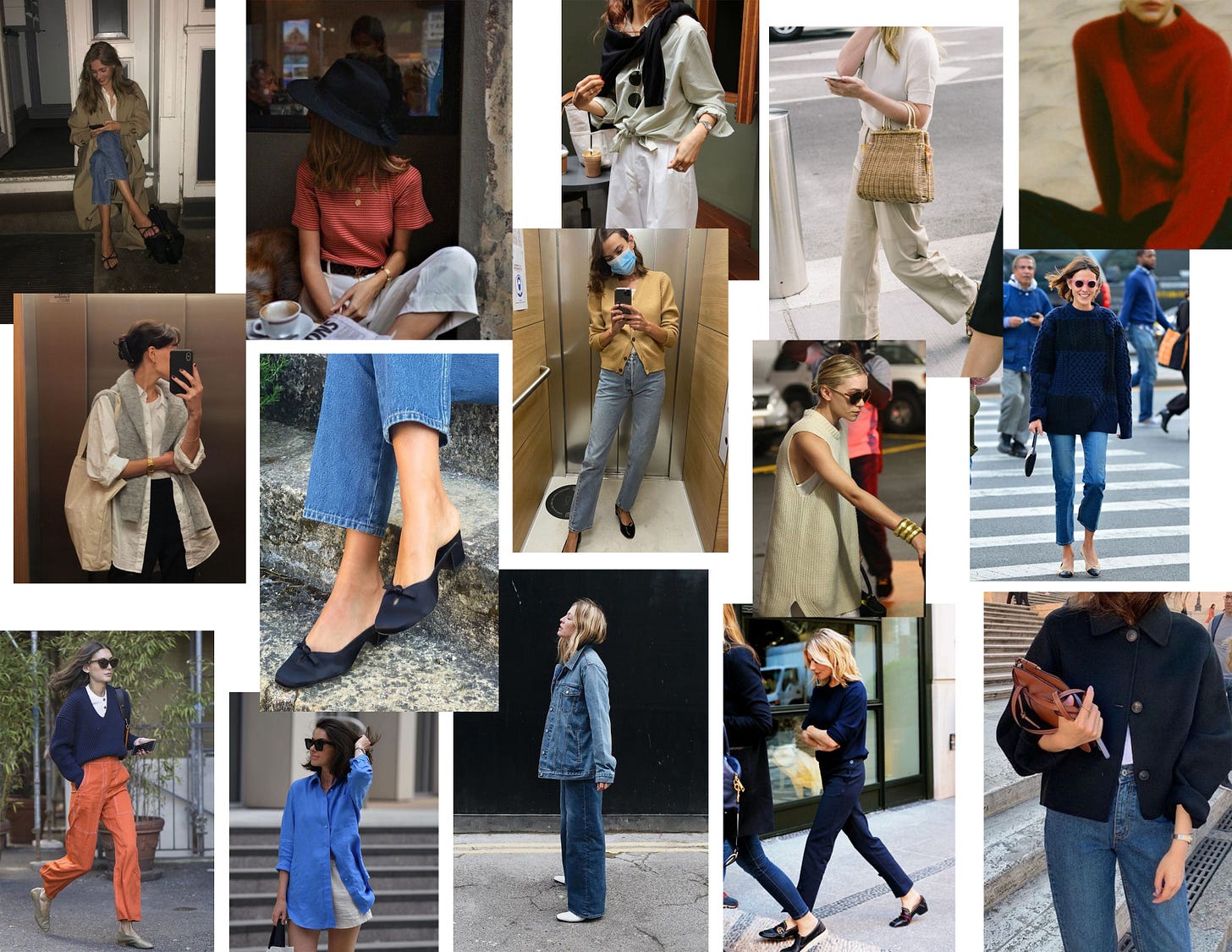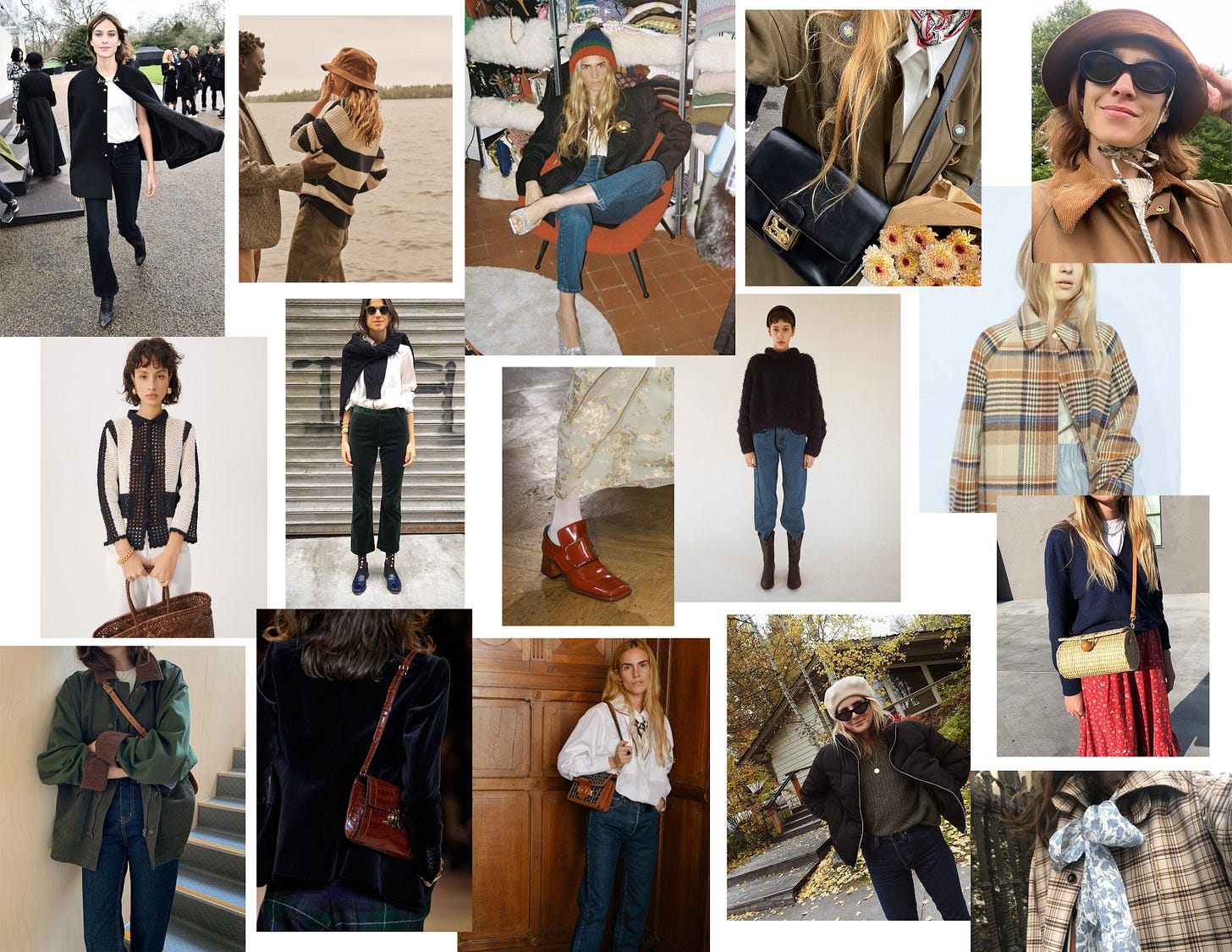ÀLC FAQ: How do you navigate slow times in business?
Also, What’s your personal style philosophy? and How can I grow on Substack?
Welcome back to ÀLC FAQ, a monthly column where you submit questions and I answer them! Today I’ll be answering three questions on:
What to do when business is slow
My personal style philosophy
Growing on Substack
Per usual, 2 of the questions are free for everyone to read and the last one is a treat for paid subs. Paid annual subscriptions are 20% off this month ($40 instead of $50!) so consider upgrading if you haven’t already! You’ll get access to the whole archive of posts and tons more.
(By the way, there are other non-monetary ways to support your favorite writers on Substack, too! This note by Kirsten Powers shares a few of them.)
What are your thoughts on pressing through slow times in business?
That they’re the worst!!!
Everyone knows there will be highs and lows when it comes to working for yourself. They tell you to prepare for it, to work hard and save when things are flowing and to prepare for when they aren’t. They compare the experience to roller coasters and pendulum swings and use all of the other “what goes up must come down” metaphors. And still, it feels like absolute garbage when it’s happening to you, even though you knew it would, and it sucks.
I hit one of these dry spells in 2022, and by the time I hit month 3 of making very little money I was completely freaked out. It was as if every insecurity I had showed up to the same dinner party and they were all talking over each other at the table. You’re fooling yourself, you need to get a real job, one said. You are too old to start over, what are you thinking?!, said another. Whatever talent you think you have, you don’t, said the rudest one of all.
I think when we’re entering panic mode we can start to lose sight of the reality of the situation. Slow times happen for everyone and drawing any sort of meaning from them can lead us to start to believe things about ourselves that just aren’t true. What my mental dinner party guests should have said was that we were still in a global pandemic, and that I was still learning what I wanted to be doing and needed to do the work to figure it out, and that the word “recession” was being thrown around a lot and therefore people weren’t jumping at the chance to start new businesses. It wasn’t a reflection of my capabilities or my creativity or my self worth—it was a reflection of a variety of unfortunate circumstances. Accepting that didn’t make it any easier, though.
After complaining about how slow things were to my friend Alysia, she recommended I listen to the audio book We Should All Be Millionaires by Rachel Rodgers. She warned me that it was corny (it was) and that she didn’t agree with all of it (neither did I,) but that it might help me focus on what I could be doing that was within my control. So I listened to it with an open mind because, well, I had the time.
I drew two conclusions from listening to that book:
That I needed to make a shift from a scarcity mindset to an abundance mindset, and
That while I waited for the storm to pass, I could be using my various skill sets to make money doing other things.
Number 1 is an ongoing process and something I’ll maybe write about later, but conclusion 2 prompted me to look at all the tools I had in front of me and to ask myself how I could be using them to bring in some income.
For one, I decided to invest some time into Pasta Girlfriend while I had the space to, and ended up working on a collaboration with Bucatini that would ultimately serve as a good portfolio piece later on. I also started charging when people wanted to ask me for advice—I had been meeting with strangers and letting people “pick my brain” for free for months—so I offered one-on-one creative mentorship sessions anyone could sign up for. And lastly, I spent some real dedicated time focusing on what I was offering through my business and how I could make it clearer. By the time things were starting to pick up again I had updated my portfolio, redesigned my website, and worked with
on some brand positioning language.I like to think that now I’m better prepared for the next time I hit a slow season because I’ve diversified the ways I can make money, including through this newsletter, but who knows—the slump inevitably comes for all of us, and we all just have to ride the wave (yet another metaphor.)
Can you describe your personal style? What is your style philosophy?
I think if you asked me this 3 years ago I would have responded with a panicked “I don’t even know anymore!!!”, but thanks to the stylist Allison Bornstein (who I’ve never met or worked with but whose content I consume like crazy) I now have an answer.
You’re probably already familiar with Allison but if you aren’t, you can check out her TikTok and Instagram for more info. It’s Allison who came up with the Wrong Shoe Theory, the Three Word Method, and several other little exercises she’s developed to help people navigate their personal style. Her book, Wear It Well, breaks it all down in a way that I’ve heard described as “closet therapy”.
The Three Word Method encourages you to pick three words to describe your personal style: one practical, one aspirational, and one emotional. The idea is that when you use these words to guide the decisions you make when getting dressed, you’ll start to communicate a point of view that’s uniquely yours. My three words are classic, British, and girlish, and I’ll explain what I mean by each, because they’re sort of personal code words that actually encompass a few different ideas. Like, I don’t mean that the things I wear have to be literally from Great Britain or that I want to dress like a little girl, but it’s a shorthand for a vibe I see in my head.
After I landed on my words I ended up making a mood board for each, because of course I did. Here’s how it breaks down:
Classic: Things that are simple, well-designed, and that can exist in any era.
Inspiration: Early J. Crew, The Row, @simplicitycity
Items: Vintage denim, trench coats, cashmere sweaters, cardigans, white tees, loafers, button up shirts, trousers, black sunglasses
British: Preppy, tailored silhouettes and wooly textures. Notes of equestrian, sometimes a little ‘70s.
Inspiration: Ivy style, Alexa Chung, Ralph Lauren, Paul McCartney
Items: Blazers, single-breasted coats, hats, barn jackets, riding boots, horsebit details, chunky knits, plaids and stripes
Girlish: Feminine shapes and details, but not overly romantic or sexy.
Inspiration: Khaite, Doen, Lucy Boynton, Audrey Hepburn
Items: Basket bags, exaggerated sleeves, swing coats, peter pan collars, mary janes, top-handle bags, white poplin, bows (in moderation)
If I lean too British or girlish when I’m getting dressed it can read a little costume-y, but keeping my three words in mind when I’m styling an outfit has really helped me navigate my own personal style. I might not wear a white poplin dress with a basket bag and mary janes, but if I wear that dress with a trench coat and some horsebit loafers it really starts to feel like me.
I’m curious — has anyone else tried the Three Word Method and if so, what are your words?! Let us know in the comments.
Can you share a bit about your experience with Substack? Has it been lucrative? How did you grow your subscriber list? Should I start one???
Keep reading with a 7-day free trial
Subscribe to À La Carte to keep reading this post and get 7 days of free access to the full post archives.









